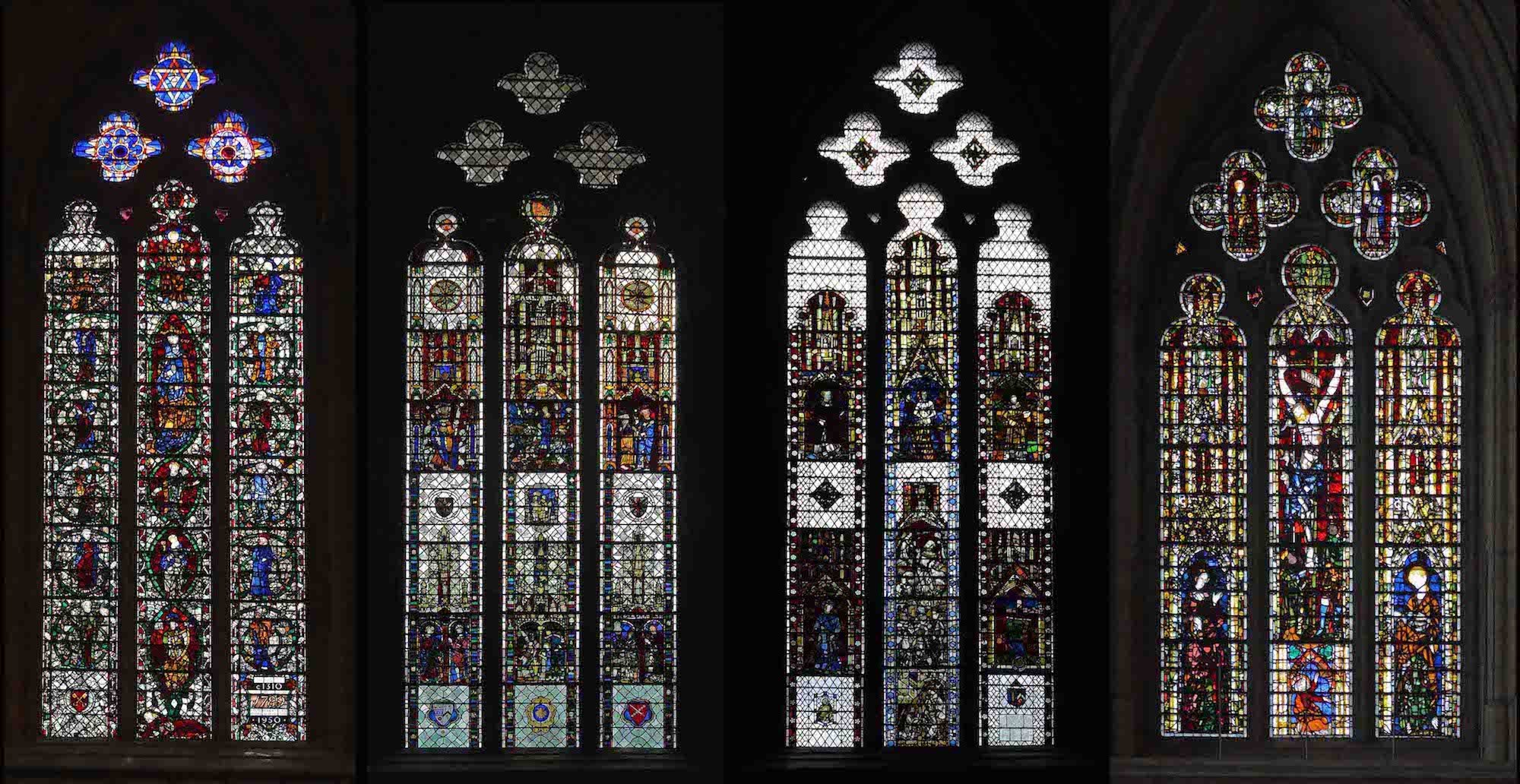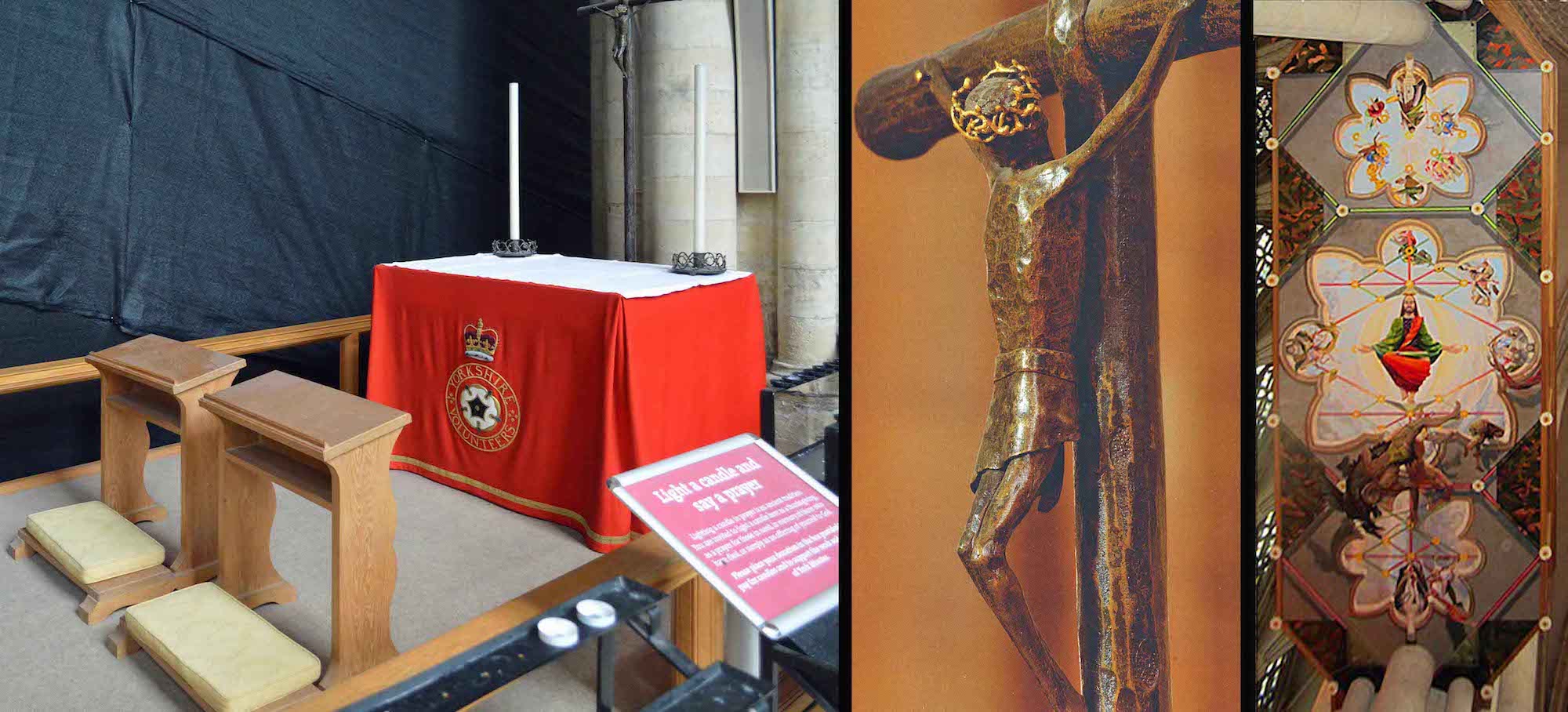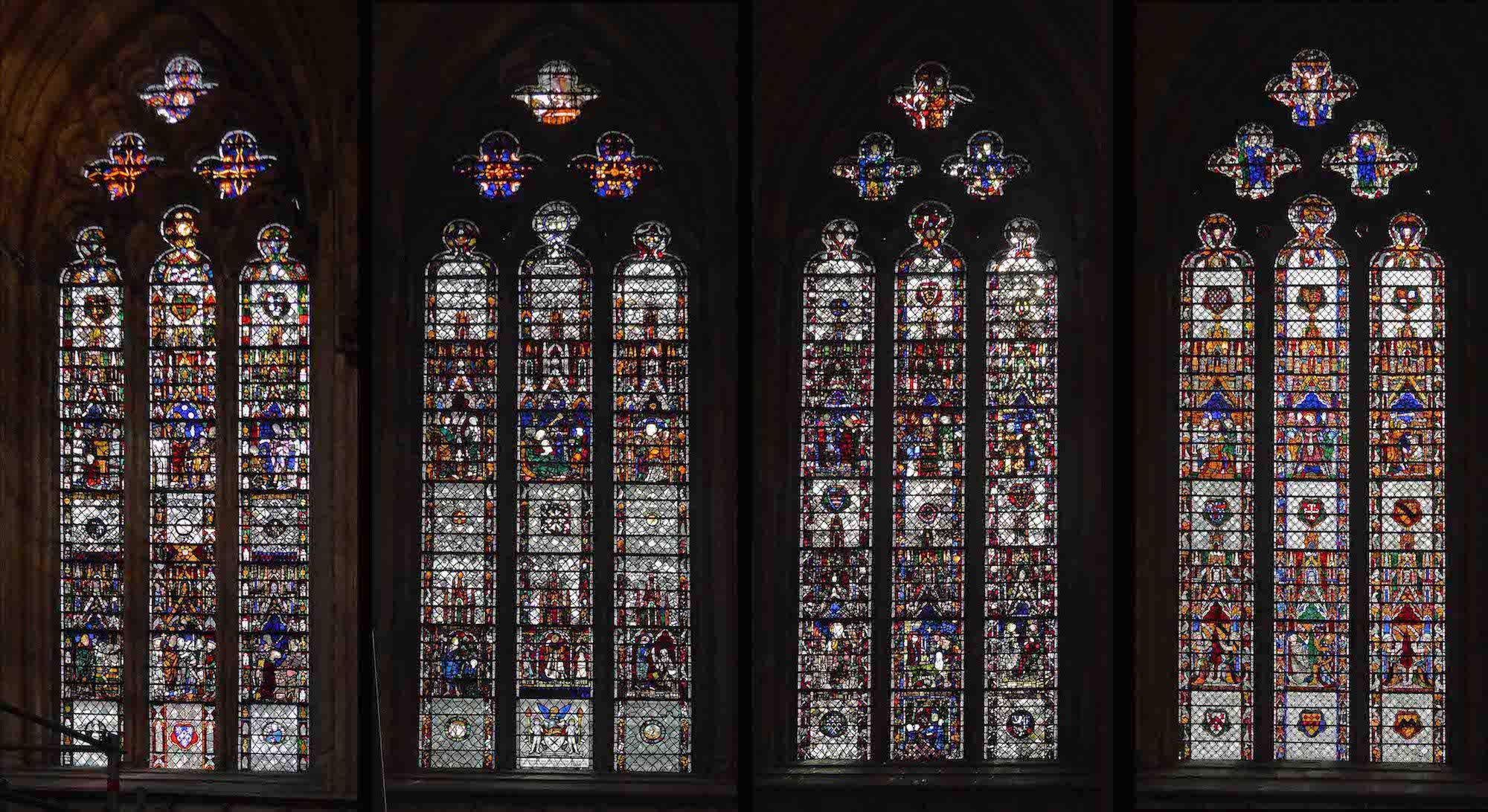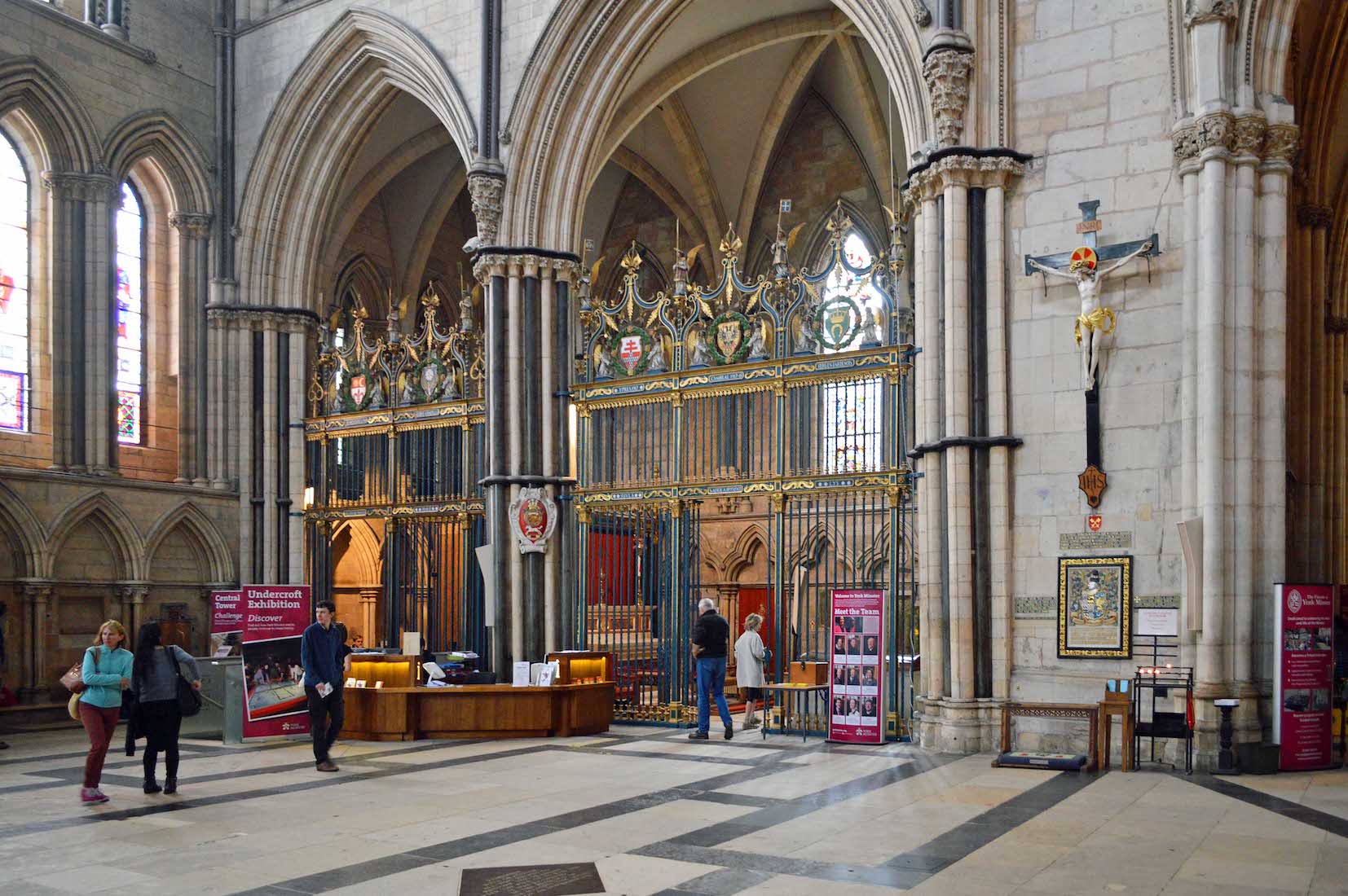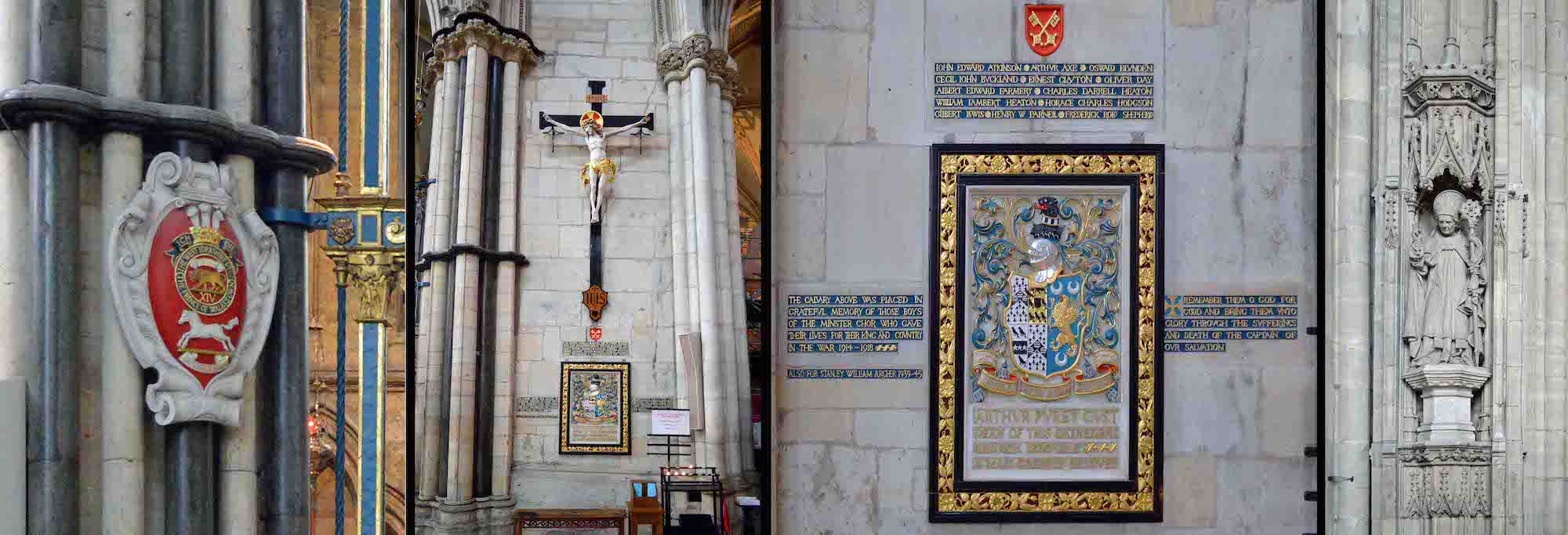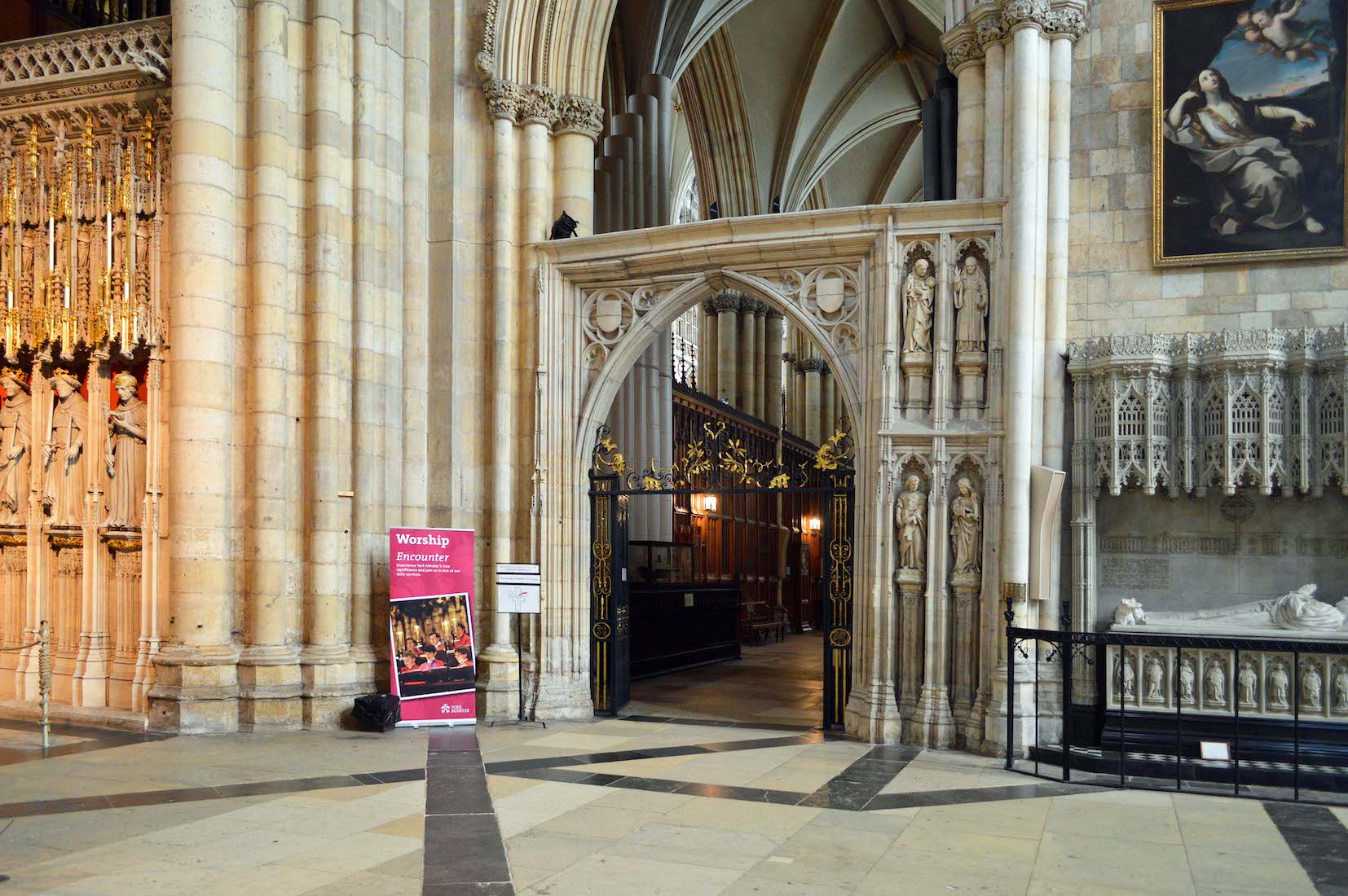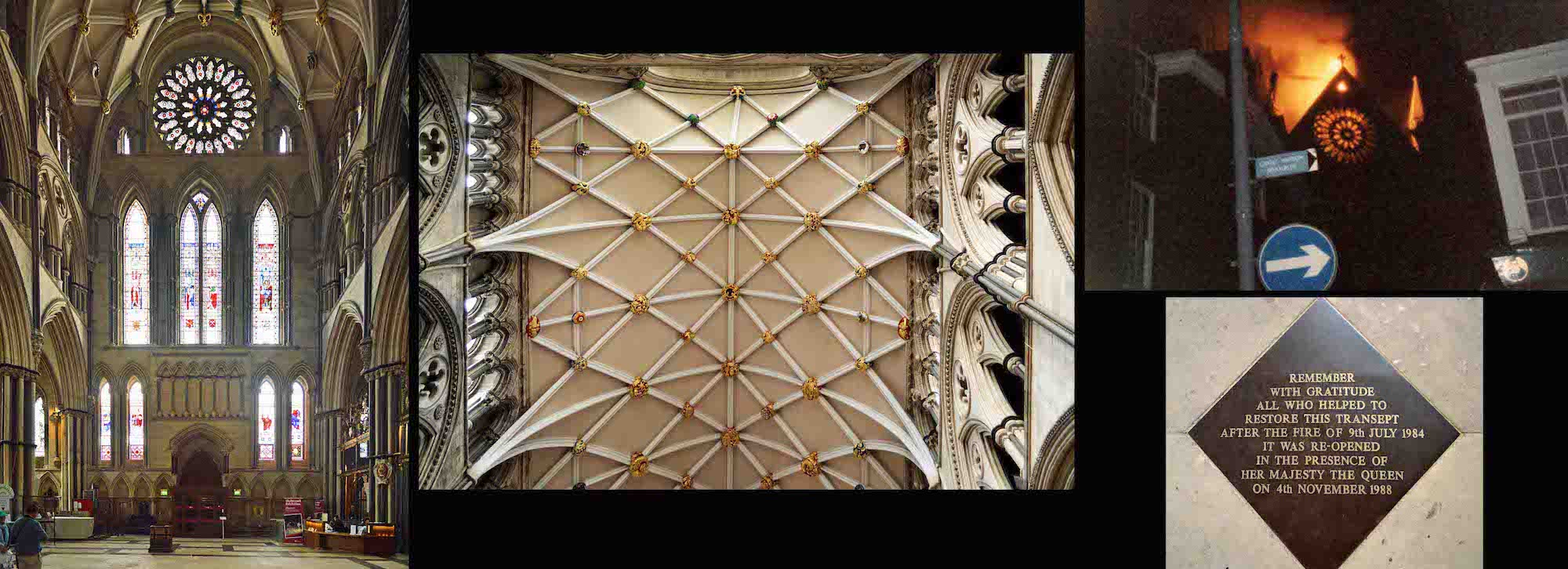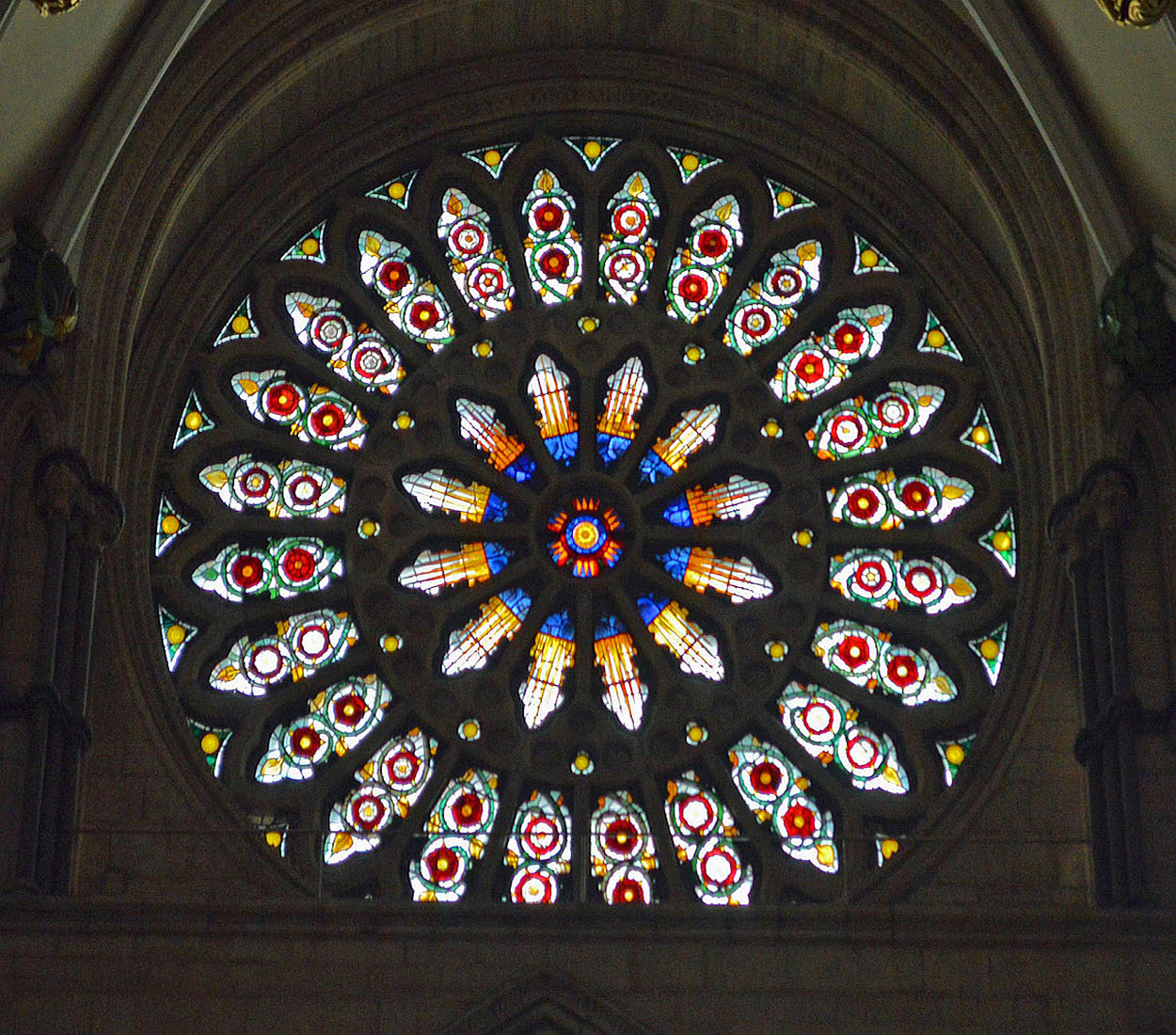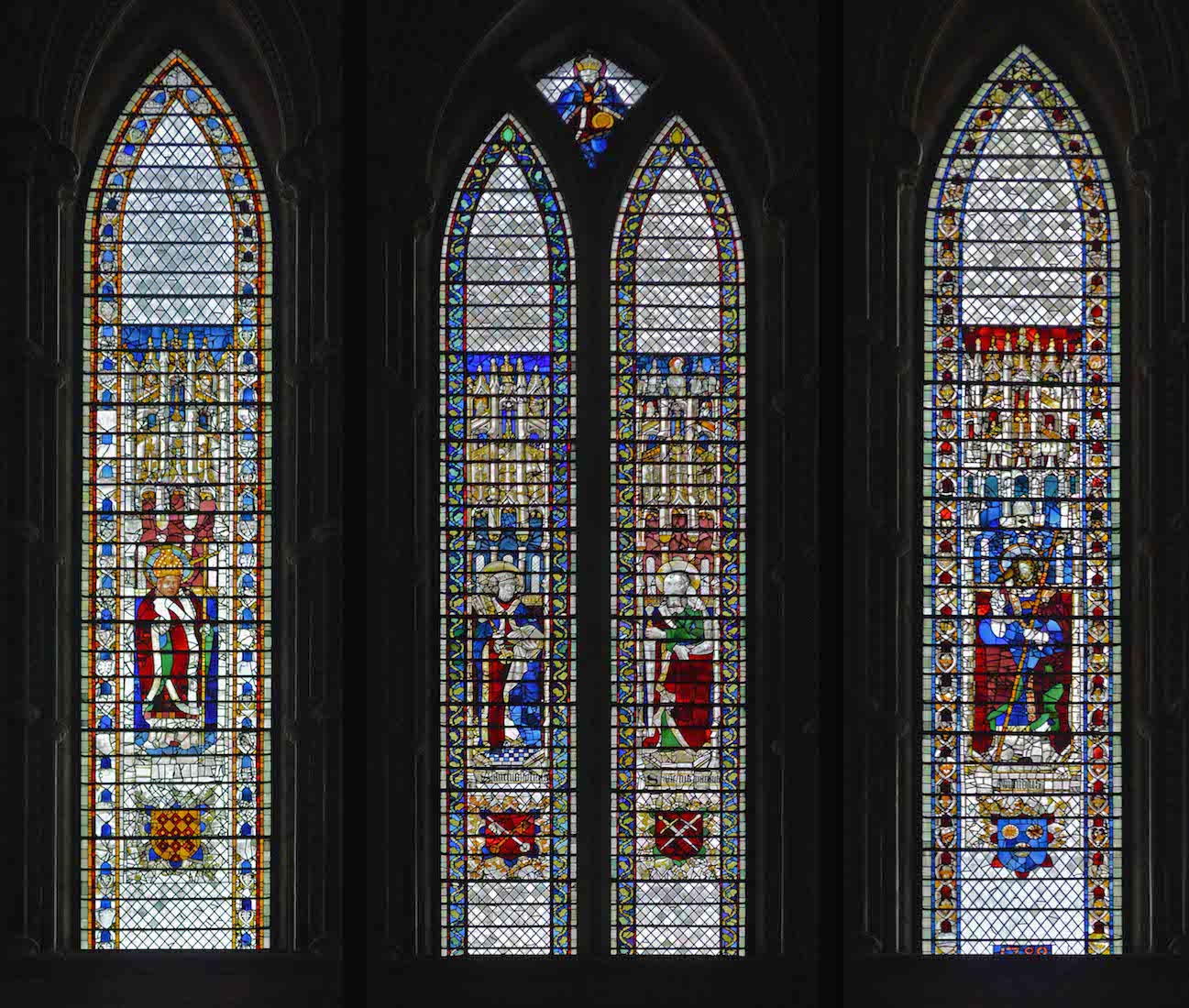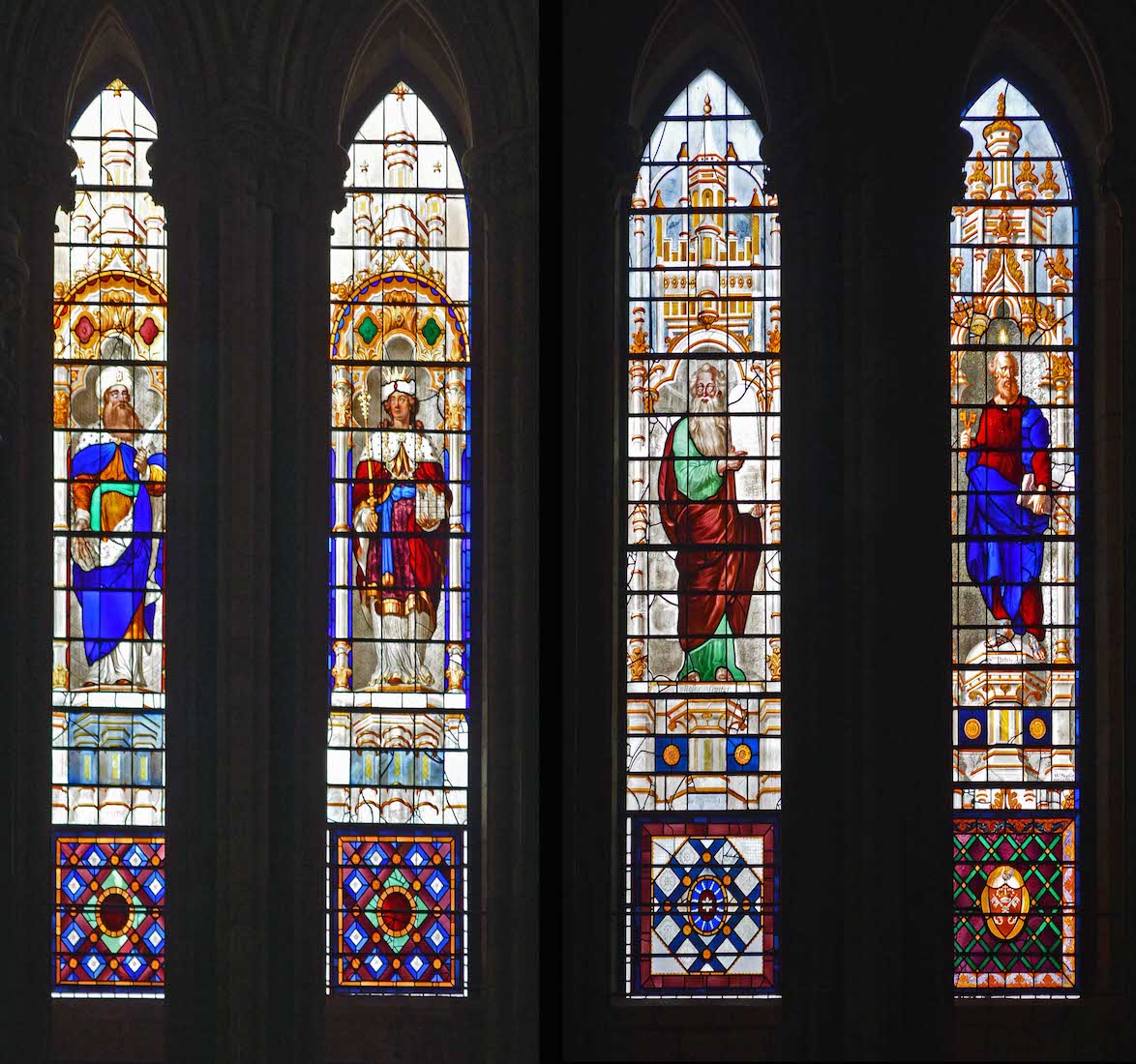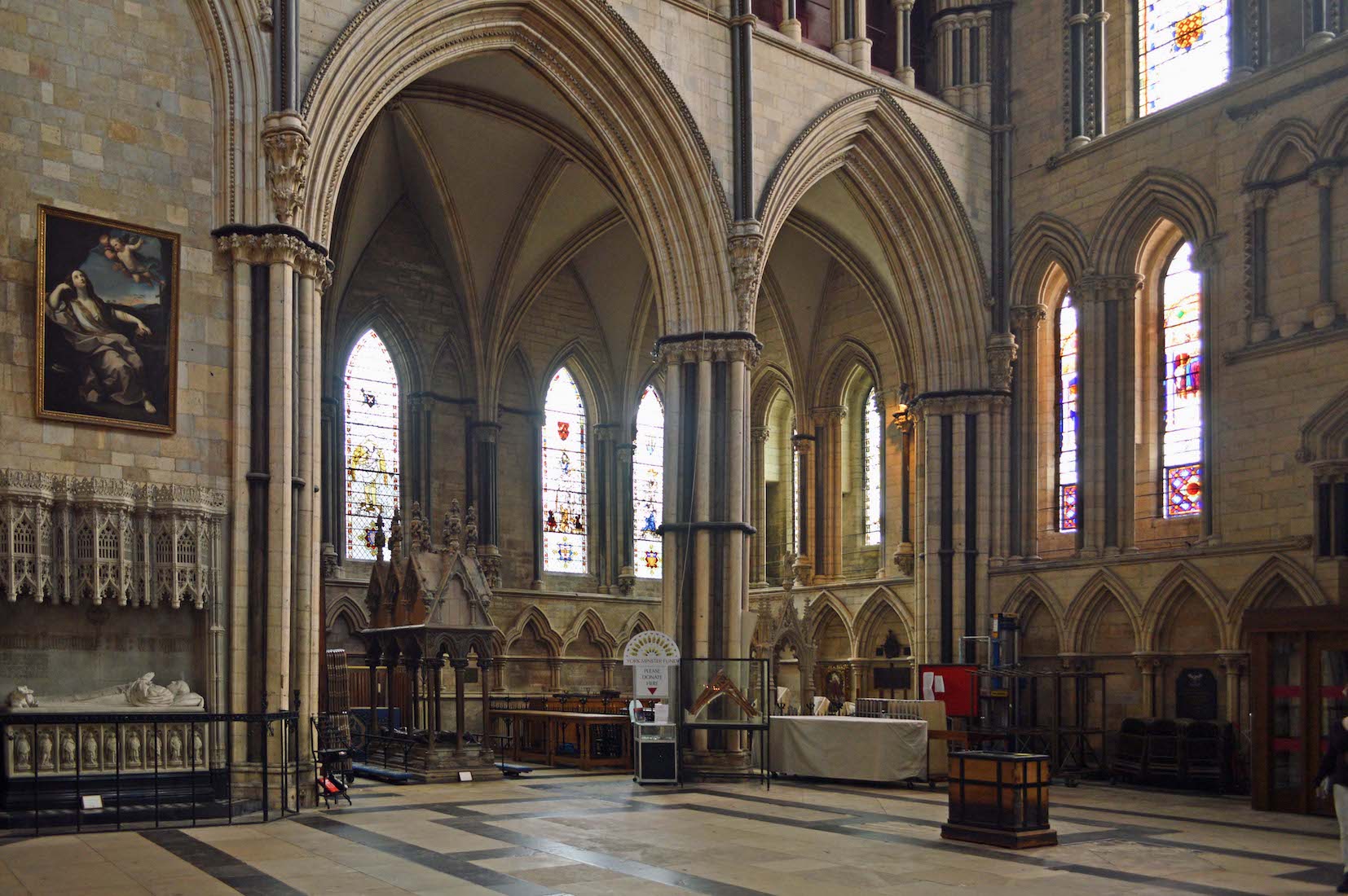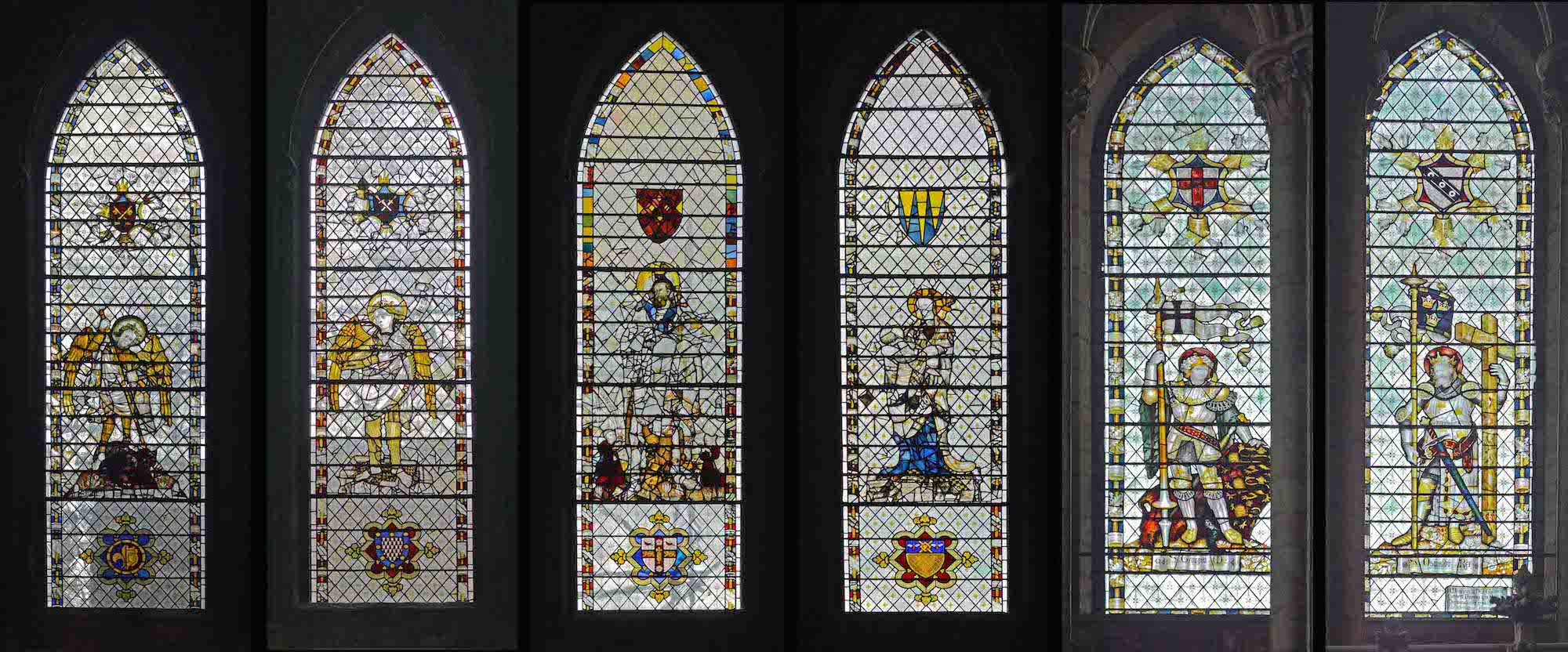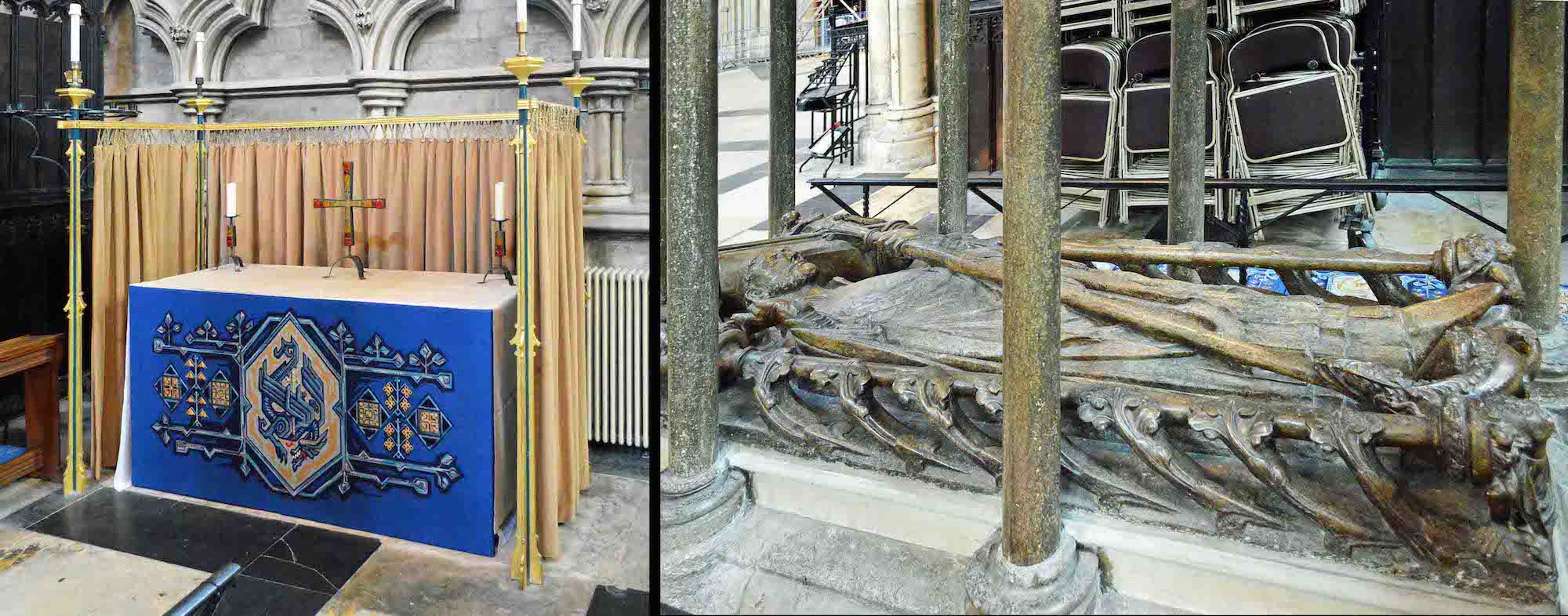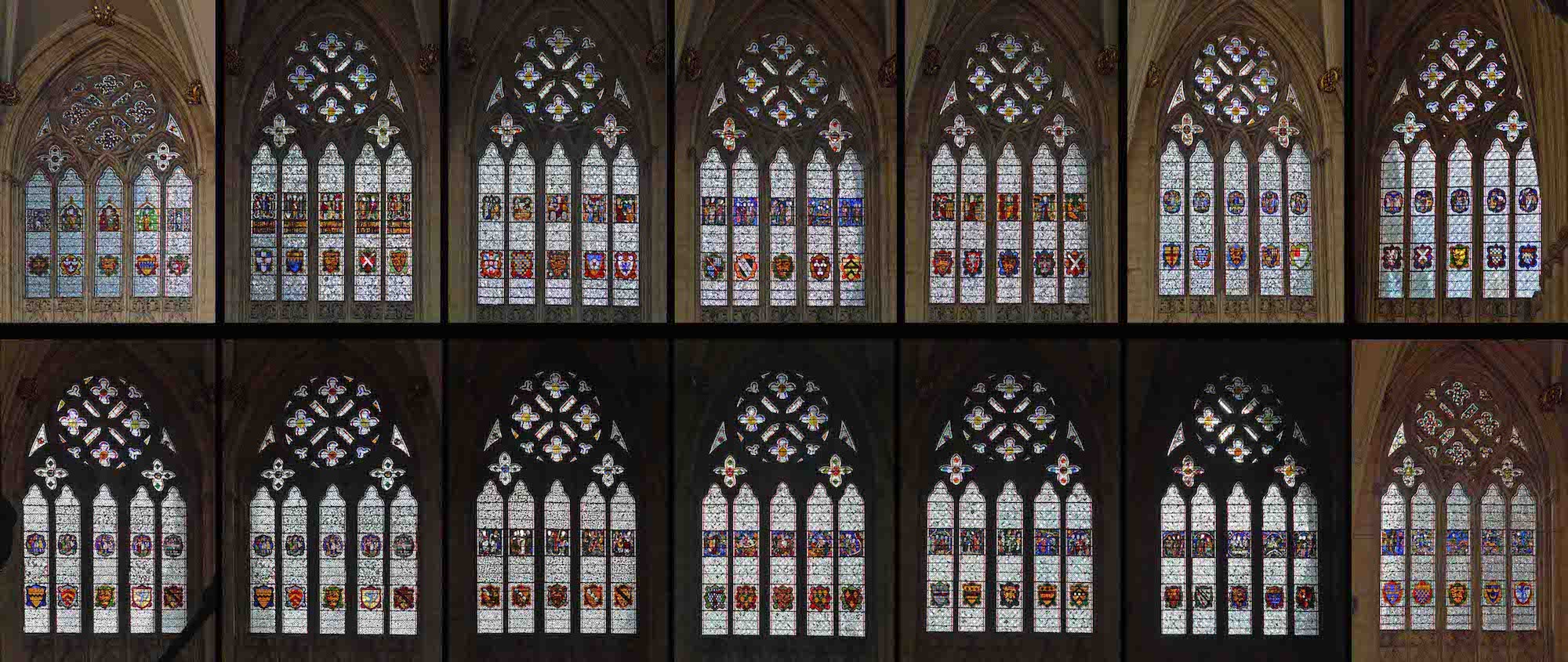
In each window the arms of the King (golden leopards on a red background) are flanked by the shields of the northern nobility who fought for him in the Scottish wars of the period. A similar display of heraldry, brightly painted, is carved in the stone of the nave arcade just below the windows. PLAN
42. SOUTH NAVE AISLE
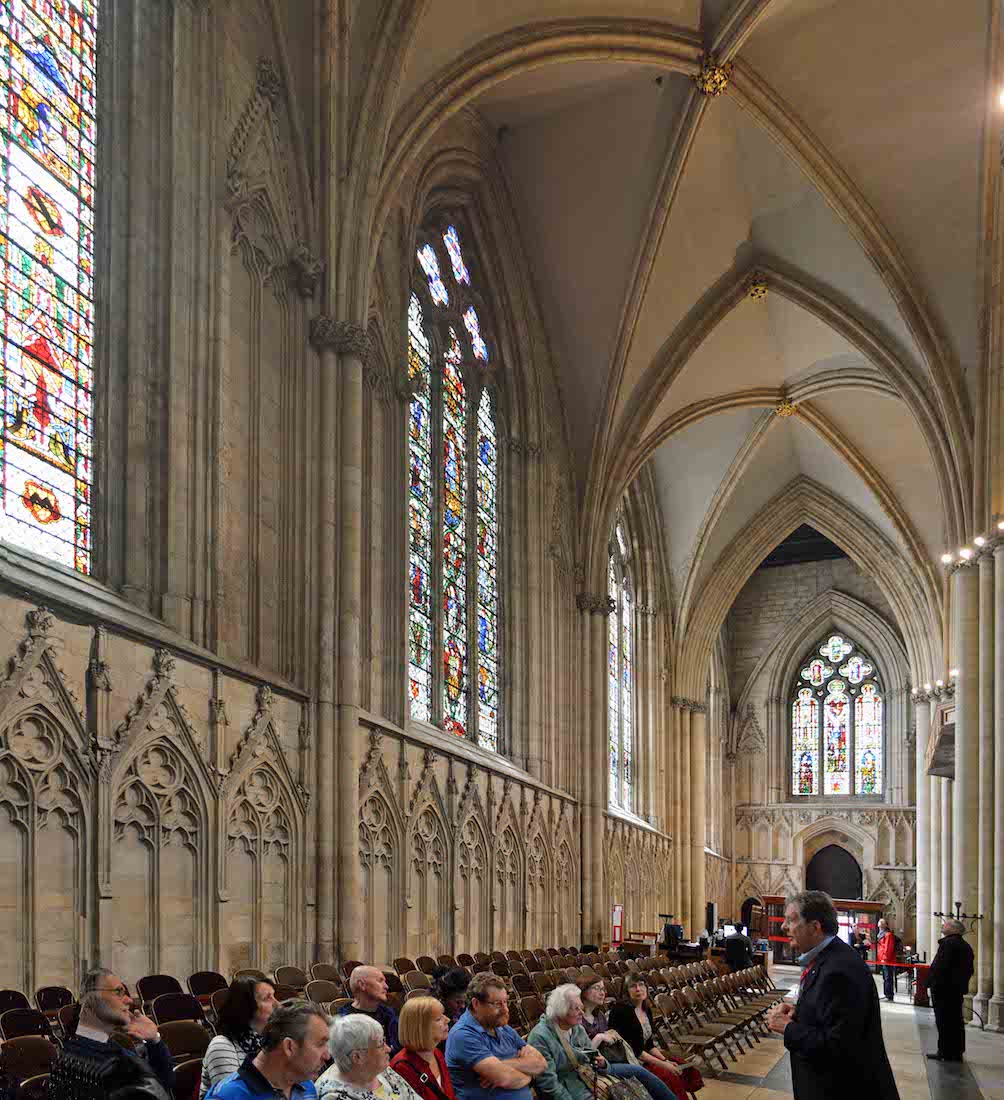
We next explore the South nave aisle. This is very like the Northern aisle in structure with a row of decorated arches below the stained glass windows. We walk to the far (West) end to check out the windows.
43. SOUTH NAVE WINDOWS
At right is the crucifixion window in the West wall, facing down the aisle. The three windows at left are all from the South wall, closest to the Southwest corner. Near here, between a pair of columns is a modern (1982) chapel to St. Cuthbert – hermit and bishop.
44. ST CUTHBERT CHAPEL
This chapel is dedicated to the Yorkshire Volunteers Regiment. Yorkshire artist Graeme Willson painted the ceiling depicting Cuthbert's vision of heaven. Supposedly, Cuthbert had such a vision as a young shepherd and soon afterwards became a monk. Mr J. E. Hill of Hunmanby made the chapel crucifix and candlesticks.
45. SOUTH NAVE WINDOWS (CONTINUED)
The De Mauley window (at right) was the gift of Stephen de Mauley, Archdeacon of Cleveland (d.1317) who is accompanied in the bottom row of the window by his father and brothers. Above the Mauley donors are scenes of martyrdom of their favourite saints: St Stephen, St Andrew and St John the Baptist.
46. SOUTH TRANSEPT
Our perusal of the South nave windows has brought us to the South transept. This view of the West wall shows a wonderful screen separating the St George Chapel, with a coat of arms on the middle column. There is also a large crucifix and plaque. Here too, at left, is the entry to the Undercroft and the central tower.
47. VARIOUS ITEMS OF INTEREST
The coat of arms at left is of The West Yorkshire Regiment (Prince of Wales's Own) (14th Foot) – an infantry regiment of the British Army. The large memorial crucifix is remembered for being untouched in the 1984 fire. Some burn marks are still visible on the adjacent stone. The plaque is for Arthur Purey-Cust (1828–1916), Church of England priest and author. St Cuthbert looks down from the column.
48. ST GEORGE SCREEN
A screen separates the St George Chapel (home of the West Yorkshire Regiment) from the rest of the South transept. The top features a long and highly decorated panel. Each supporting column is topped by a flag-carrying angel. In between are memorial wreaths, each surrounding a shield and flanked by two further angels. Below are names and dates of significant battles.
49. ST GEORGE’S CHAPEL
A simple altar with candlesticks stands to the South, with a sanctuary lamp, and two lancet windows behind depicting two bishops. To the left is a Book of Remembrance.
50. BOOK OF REMEMBRANCE AND CERTIFICATES
Just by the Chapel entrance stands a Book of Remembrance in which are recorded the names of members of the West Yorkshire Regiment who gave their lives in battle. At right we see some of the certificates and honours bestowed on the Regiment.
51. CHAPEL WINDOWS
These two windows are in the West wall of St George’s Chapel. The windows comprise eight scenes in horizontal panels, but need some interpretation!
52. LOOKING UP IN THE SOUTH TRANSEPT
We leave St George’s Chapel and return to the transept – better than new after its restoration post 1984. As our eyes soar upwards we see the rose window above the array of windows on the South wall.
53. SOUTH TRANSEPT OVERVIEW
We shall look at the South windows shortly. Above us is the beautiful vaulting (in fact, wooden) with mainly gold bosses, matching the vaulting of the nave, but in a rather more orderly way. In the floor there is set a brown plaque which reads: ‘Remember with gratitude all who helped restore this transept after the fire of 9th July 1984. It was reopened in the presence of Her Majesty the Queen on 4th November 1988’.
54. ROSE WINDOW
The rose window forms a flower head with 24-fold symmetry. The stonework of the window dates from the building of the South Transept c.1250. The window has a mixture of sixteenth, eighteenth and twentieth century glass. The design of the outer panels contains two red Lancastrian roses, alternating with panels containing two red and white Tudor roses. The inner sunflower was inserted in 1793 by the local, self‐taught, glass painter William Peckitt.
55. UPPER LANCET WINDOWS
The figures depicted in these lancets are from left: St William of York, St Peter. St Paul and St Wilfred. The windows carry a date of 1790 (at the base of the St Wilfred window), but the central lancets are earlier than this, and it is believed that the date indicates the time when William Peckitt of York restored the windows.
56. LOWER LANCET WINDOWS
These four relatively recent lower lancets depict four Biblical characters, and were designed and created by William Peckitt in 1768. The figures illustrated are from left: Abraham, King Solomon, Moses and (for some reason) St Peter holding the keys of the Kingdom.
57. ST MICHAEL’S CHAPEL
On the Eastern side of the South transept we find St Michael’s Chapel. A canopied effigy lies at left, and there is a similar installation in the Chapel. Unfortunately the Chapel does not appear to be in pristine condition ... ..
58. CHAPEL WINDOWS
There are four windows in the East wall of the Chapel, and two in the South wall. The two Southern windows depict St George and St Oswald. The angel in the left window is presumably the Archangel Michael.
59. ALTAR AND CHANTRY
The altar in this chapel has a striking blue and gold frontal. On top is an unusual cross and pair of candlesticks in gold and red. Towards the rear of the chapel is a chantry founded in 1241 by Archbishop Walter de Grey, who held the See from 1215 to 1255. He is buried here.
60. LEAVING THE SOUTH TRANSEPT
We return from St Michael’s Chapel to the main area of the South transept. As we leave, there is an effigy to our immediate right, next to the doorway to the South quire aisle. Beyond that we catch a glimpse of the King’s Screen.


